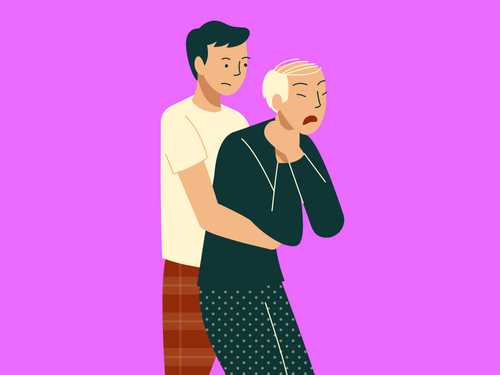Unconsciousness can be a distressing and potentially life-threatening situation, but knowing how to respond with prompt and proper first aid can make all the difference. Whether it’s caused by a medical emergency, trauma, or another underlying issue, understanding the appropriate steps to take when someone loses consciousness is crucial. In this article, we’ll provide you with a comprehensive guide on first aid treatment for unconsciousness, including the causes, signs, and step-by-step instructions for assistance.
Causes of Unconsciousness
Unconsciousness can result from various causes, such as:
- Medical Conditions: Conditions like diabetes, epilepsy, and heart problems can lead to unconsciousness due to factors such as low blood sugar, seizures, or heart attacks.
- Trauma: Head injuries, falls, or accidents can cause unconsciousness, often due to concussions or brain trauma.
- Drug Overdose: Substance abuse or an overdose of drugs or alcohol can result in loss of consciousness.
- Heatstroke or Dehydration: Extreme heat, leading to heatstroke, or severe dehydration, can cause unconsciousness.
- Hypoglycemia: A sudden drop in blood sugar levels, often experienced by individuals with diabetes, can lead to unconsciousness.
Recognizing the Signs
Before administering first aid for unconsciousness, it’s essential to recognize the signs. Common indicators include:
- Unresponsiveness: The person does not respond when you try to wake them up.
- Abnormal Breathing: Check for irregular or no breathing.
- Skin Color: Look for pale or bluish skin, which can indicate a lack of oxygen.
- Dilated Pupils: Enlarged pupils may suggest a severe problem.
- Confusion or Slurred Speech: If the person was conscious before and is now disoriented or speaking unclearly.
Immediate Actions to Take
- Check for Safety: Ensure the scene is safe for you and the victim. Look out for any potential dangers like traffic or hazardous materials.
- Call for Help: Dial emergency services immediately (e.g., 911 in the United States) to summon professional medical assistance.
- Assess Responsiveness: Try to wake the person by tapping their shoulder and shouting loudly. If there is no response, gently shake them.
- Open the Airway: Carefully tilt their head back and lift the chin to open the airway. Look, listen, and feel for any signs of breathing for up to 10 seconds.
- Start CPR if Necessary: If there are no signs of breathing or only gasping, begin cardiopulmonary resuscitation (CPR) with chest compressions and rescue breaths until professional help arrives.
- Monitor Vital Signs: Continuously check for breathing and pulse. If either becomes absent, continue CPR.
- Recovery Position: If the person is breathing and has a pulse, place them in the recovery position to maintain an open airway and prevent choking on vomit.
Conclusion
Unconsciousness is a critical medical emergency that requires swift action and proper first aid. By recognizing the signs, calling for professional help, and following these essential steps, you can significantly improve the chances of a positive outcome when assisting an unconscious person. Always remember to prioritize safety and seek immediate medical assistance when necessary. Your quick response and knowledge of first aid can make a life-saving difference in such situations.






